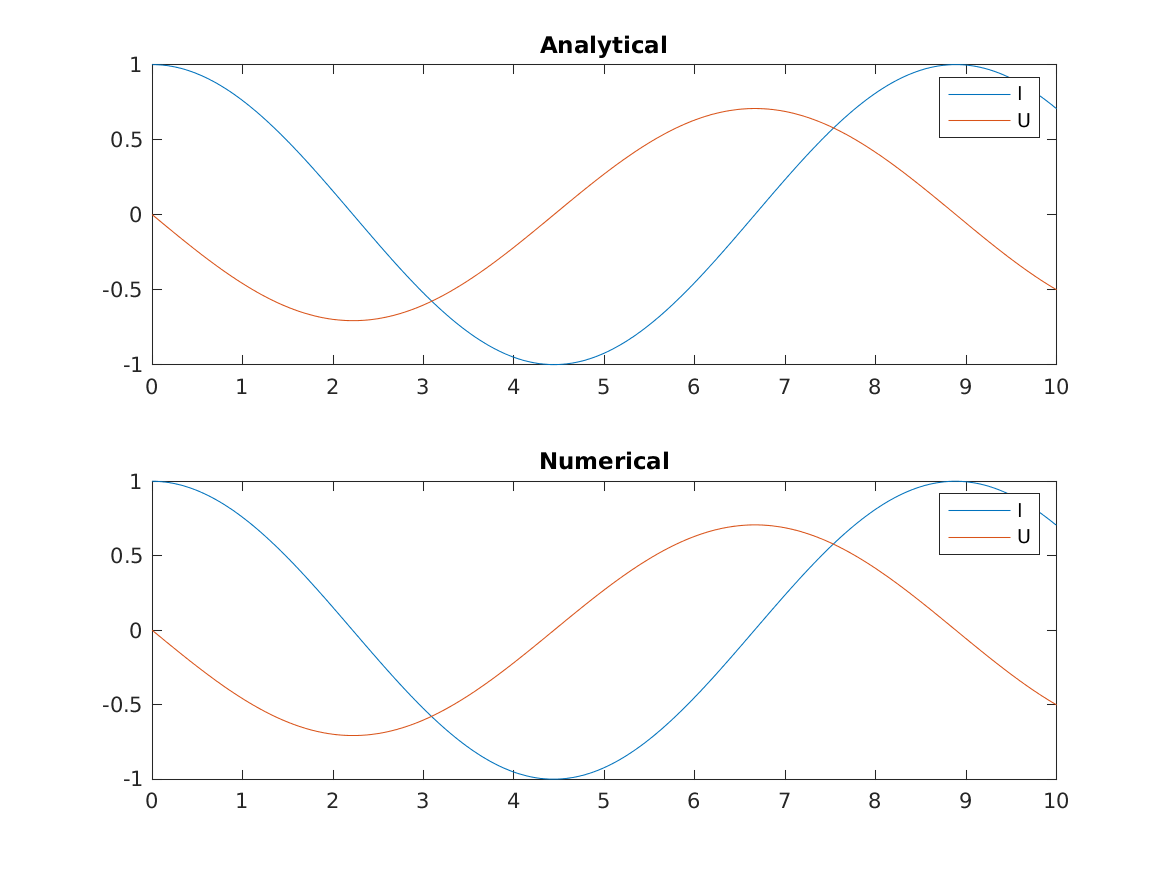Setup
The purpose of this tutorial is to illustrate the usage of preCICE to couple MATLAB code. Two different MATLAB solvers will be coupled to simulate a two-element LC circuit. This type of circuit consists of a very simple system with one inductor and one capacitor:
The circuit is described by the following system of ODEs:
$U(t) = L \frac{\text{d}I}{\text{d}t}$
$I(t) = -C \frac{\text{d}U}{\text{d}t}$
where $I$ is the current and $U$ the voltage of the circuit.
Each of these equations is going to be solved by a different MATLAB solver. Note that, as only one scalar is solved per equation, this is a 0+1 dimensional problem.
Configuration
preCICE configuration (image generated using the precice-config-visualizer):

Available solvers
- MATLAB A solver using the MATLAB bindings. Before running this tutorial, follow the instructions to correctly install the MATLAB bindings.
- Python A solver using the preCICE Python bindings.
Running the simulation
MATLAB
For running this example, first get into one of the solver folders and open a MATLAB instance. Afterward, do the same for the second solver. After adding the MATLAB bindings to the MATLAB path (in both instances), run the following commands:
In the first MATLAB instance, one can run the solver for the current:
coil
And in the second MATLAB instance, the solver for the voltage:
capacitor
The preCICE configuration file is hard-coded as precice-config.xml in the solvers.
Running from terminal
If you prefer to not open the MATLAB GUIs, you can alternatively use two shells instead.
For that, modify the path in the file matlab-bindings-path.sh found in the base directory of this tutorial to the path to your MATLAB bindings.
By doing that, you can now open two shells and switch into the directories capacitor-matlab and coil-matlab and execute the run.sh scripts.
Post-processing
As we defined a watchpoint on the ‘Capacitor’ participant (see precice-config.xml), we can plot it with gnuplot using the script plot-solution.sh. You need to specify the directory of the selected solid participant as a command line argument, so that the script can pick-up the desired watchpoint file, e.g. ./plot-solution.sh capacitor-python. The resulting graph shows the voltage and current exchanged between the two participants.
Additionally, the MATLAB participant capacitor-matlab records the current and voltage over time. At the end of the simulation it creates a plot with the computed waveforms of current and voltage, as well as the analytical solution.
After successfully running the coupling, one can find the curves in the folder capacitor-matlab as Curves.png.
Example of a Curves.png plot:

References
[1] Schematic of a simple parallel LC circuit by First Harmonic - Own work, CC BY-SA 3.0, https://commons.wikimedia.org/w/index.php?curid=21991221